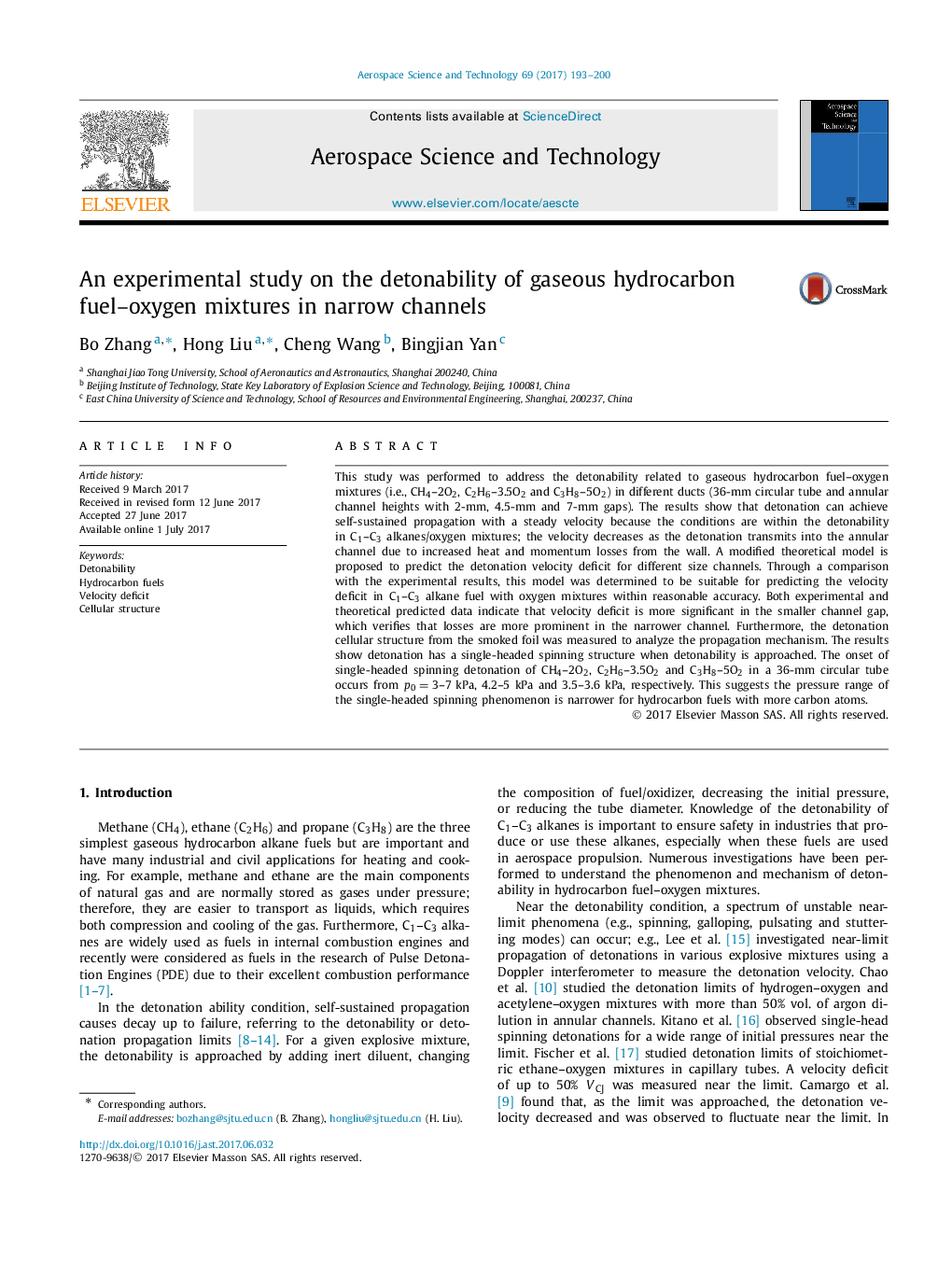| Article ID | Journal | Published Year | Pages | File Type |
|---|---|---|---|---|
| 5472729 | Aerospace Science and Technology | 2017 | 8 Pages |
This study was performed to address the detonability related to gaseous hydrocarbon fuel-oxygen mixtures (i.e., CH4-2O2, C2H6-3.5O2 and C3H8-5O2) in different ducts (36-mm circular tube and annular channel heights with 2-mm, 4.5-mm and 7-mm gaps). The results show that detonation can achieve self-sustained propagation with a steady velocity because the conditions are within the detonability in C1-C3 alkanes/oxygen mixtures; the velocity decreases as the detonation transmits into the annular channel due to increased heat and momentum losses from the wall. A modified theoretical model is proposed to predict the detonation velocity deficit for different size channels. Through a comparison with the experimental results, this model was determined to be suitable for predicting the velocity deficit in C1-C3 alkane fuel with oxygen mixtures within reasonable accuracy. Both experimental and theoretical predicted data indicate that velocity deficit is more significant in the smaller channel gap, which verifies that losses are more prominent in the narrower channel. Furthermore, the detonation cellular structure from the smoked foil was measured to analyze the propagation mechanism. The results show detonation has a single-headed spinning structure when detonability is approached. The onset of single-headed spinning detonation of CH4-2O2, C2H6-3.5O2 and C3H8-5O2 in a 36-mm circular tube occurs from p0=3-7Â kPa, 4.2-5 kPa and 3.5-3.6 kPa, respectively. This suggests the pressure range of the single-headed spinning phenomenon is narrower for hydrocarbon fuels with more carbon atoms.
